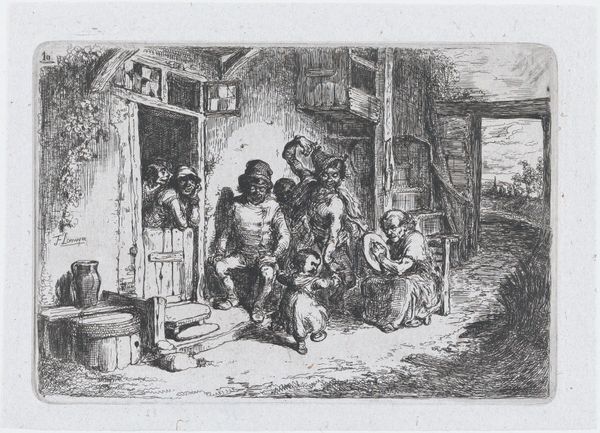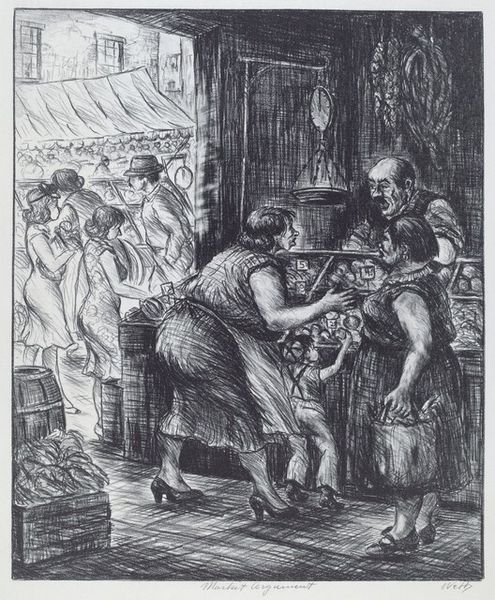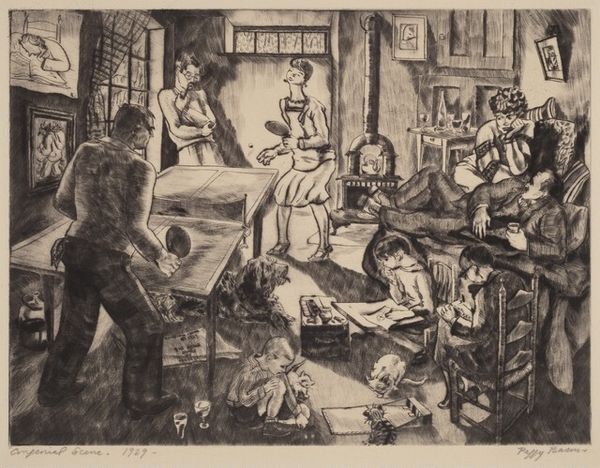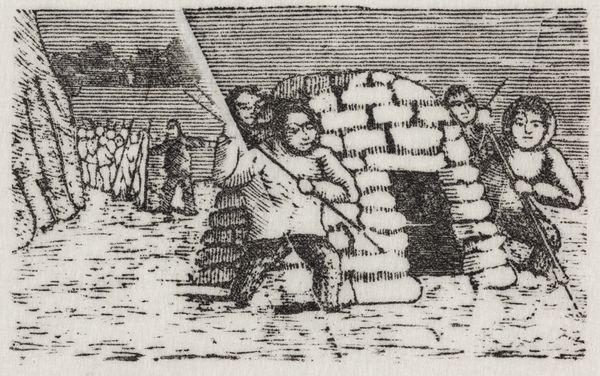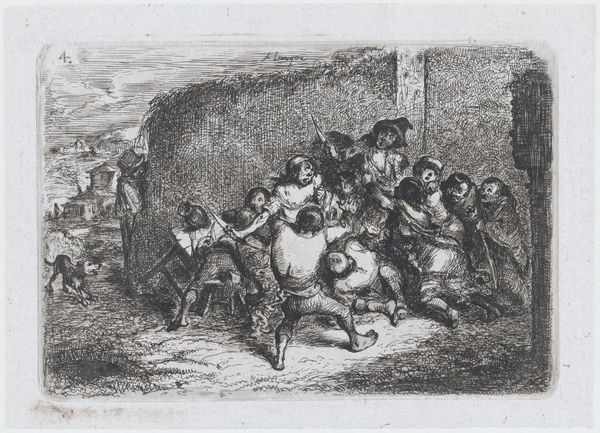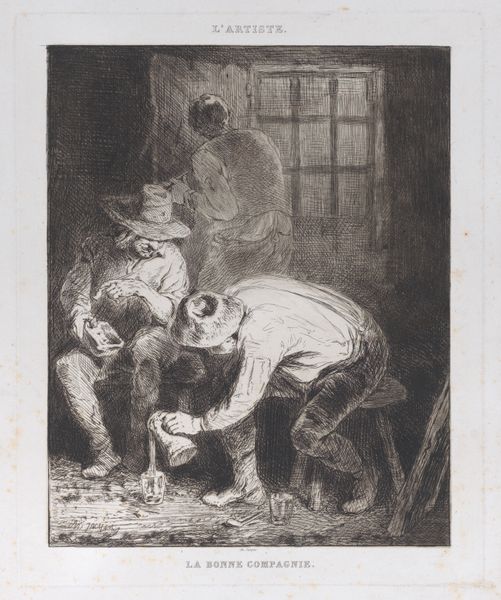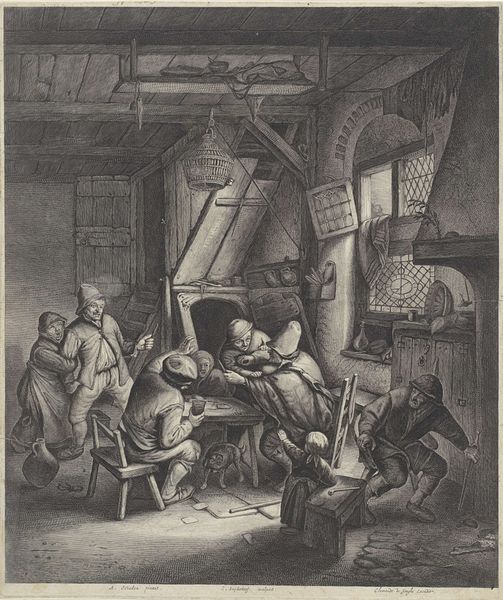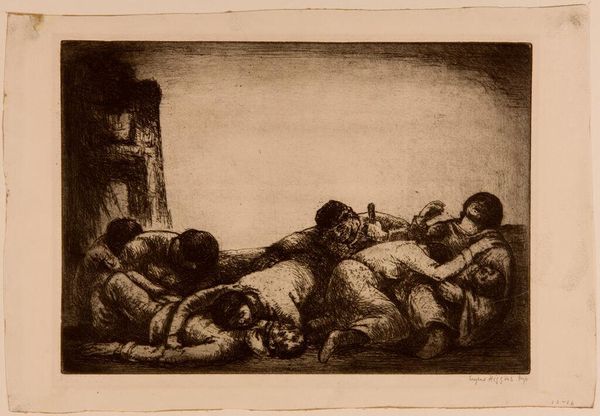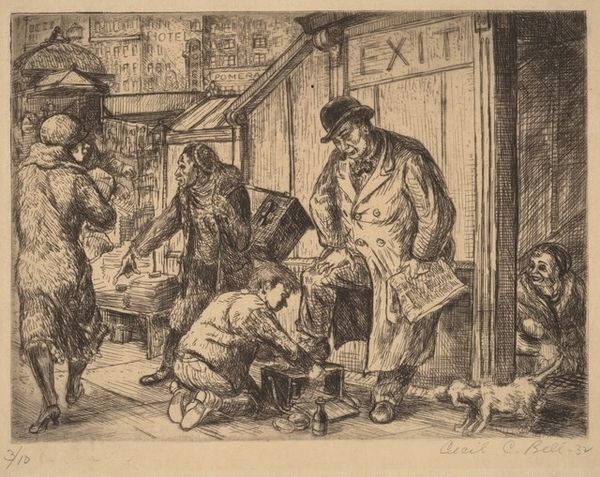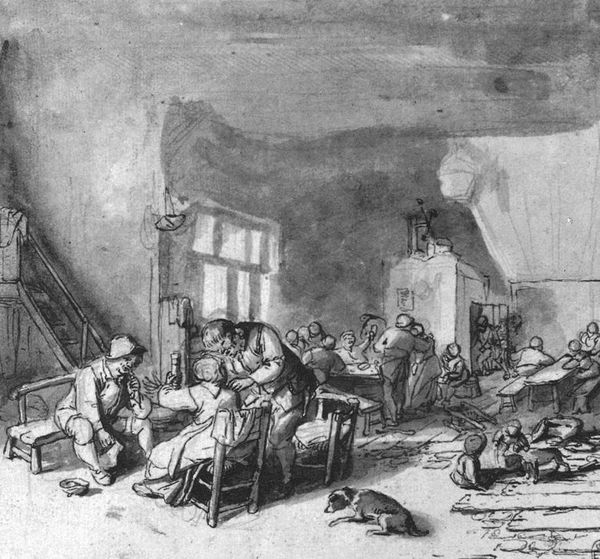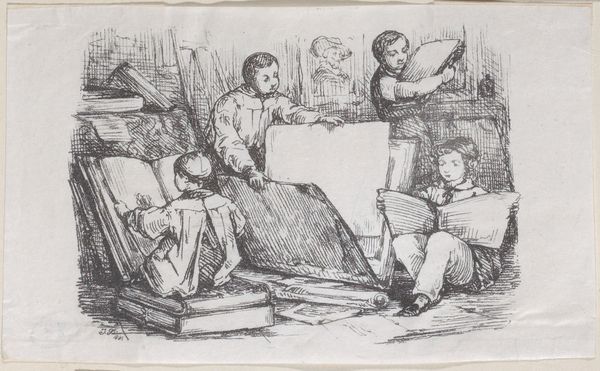
print, etching
#
narrative-art
# print
#
etching
#
caricature
#
pencil sketch
#
vehicle
#
landscape
#
figuration
#
vanitas
#
romanticism
#
history-painting
Dimensions: 20.5 x 15.5 cm
Copyright: Public domain
Francisco Goya made this etching called ‘Cartloads to the cemetery,’ using a printmaking process, at a time of great social upheaval in Spain. It shows us bodies being piled onto a cart. More bodies lie heaped on the ground. Look at the faces of the living – they’re struggling under the weight of the dead. The print suggests the overwhelming scale of death, but also how it becomes a kind of labour. Goya made this print as part of ‘The Disasters of War,’ a series of aquatint etchings created between 1810 and 1820, in response to the Peninsular War. We can see a critique of political institutions, but also the artist’s effort to break with academic traditions. It’s clear that Goya wanted to engage with the reality of war. Understanding this work involves delving into the history of conflict, but also the institutions of art that Goya was trained in, and that he rebelled against. That’s why the role of the historian is crucial. By researching the context, we can see how art reflects and challenges social norms.
Comments
No comments
Be the first to comment and join the conversation on the ultimate creative platform.
